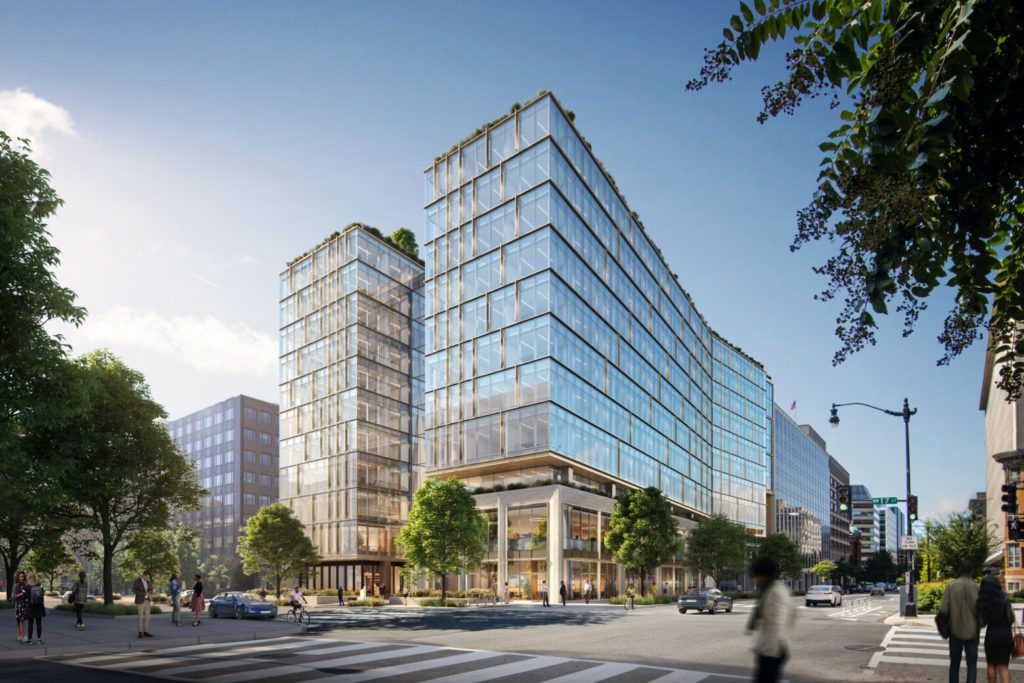Smart, core and shell – the full story
Posted:
3 / 9 / 2022
Tagged:

What is core and shell?
The core and shell approach is common in offices occupied by multiple tenants. Dually beneficial to both owner and occupier, core and shell developments allow owners to offer flexible spaces, modified according to tenant requirements; while tenants are offered a customizable space that’s malleable enough for them to adapt it in accordance with their own brand identity.
The concept of core and shell originated in the US. Before its development, building owners offered completely fitted offices. This fit-out was often unsuitable for tenants’ needs, and the required modifications represented a waste of time and money. Thus, the cost saving, time efficient alternative (core and shell) was born.
However, when it comes to core, shell and smart, the industry has encountered some big blockers that have hindered the widespread adoption of smart tech. The following will unpick those problems, uncovering the ways in which SmartScore can solve one of the industry’s biggest challenges.
Why have core and shell projects struggled to get smart?
In build-to-suit* projects, a developer has a clear vision of the end user’s requirements: the specific outcomes they want to achieve, and a firm direction of technology that can be deployed to reach those outcomes.
Sounds great, right?
Well, there’s a bit of a blocker… Unfortunately, the majority of new developments are not built to suit, and are therefore not designed for a specific user. They need to be built for a wide range of potential users, ranging from financial services institutions and law firms, all the way through to the big five tech firms (Facebook, Amazon, Apple, Netflix and Google, otherwise known as: FAANG).
*Built-to-suit describes a scenario in which a developer provides a building that is built to a tenant’s exact specification. The developer finances the project and is responsible for its design, construction and completion.
This ”build for all” model has been a barrier for adoption in smart technology in commercial real estate, as it’s extremely difficult to justify the expense of any technology without understanding the requirements of the future users.
For instance, imagine you proactively install a mobile-based access control system throughout your building on all levels . A state-of-the-art system that’s ultra secure and completely tech enabled. Then you have an anchor tenant sign a lease for 90% of the building, and said tenant requires their own, stand alone system (leaving your mobile-based system unnecessary , meaning you’ve wasted both time and money). WiredScore has seen many clients burned by “over-scoping” and extending technology too far into the tenant’s remit before even understanding their wants and needs…
Enter SmartScore and smart enablement:
SmartScore’s user-centric approach evaluates entire buildings, rather than focusing on specific technologies. Through this framework, owners and developers are able to prioritize the user experiences and features they want to enable for their core and shell developments. This helps them to ensure they are thinking about the users at the center of design and leveraging the right flexible and foundational technologies to enable those experiences.
For example, a developer may want to allow future tenants to be able to enter the building via a mobile phone access control system. Instead of installing a system throughout all floors of the building, they are able to include this for the main entrance and turnstiles, while ensuring that the solution has the ability to be extended to the tenants floors if they so choose. This would mean tenants are entering base building areas and their individual floors using a single solution, a fairly seamless experience for the end users. For the developer, the key here is ensuring that they select a solution that has an open Application Programming Interface (API) access, and the flexibility in the infrastructure to enable deployment elsewhere in the building. This is something developers can price proactively to give the tenant transparency on the solution and its cost before overreaching to install it on their floor.
Alternatively, a tenant may choose to install a separate solution on their floor, which is why the developer can include the enablement of this technology for tenants as wholly optional. This approach extends across the building’s user facing technology stack, and there are a few consistent attributes to ensure that any technology you are deploying can scale up or scale back as needed depending on the tenants.
The key to remember here is that flexibility allows customizability – and to today’s tenants, a customizable building is a desirable building. Common attributes that facilitate flexibility include:
- A common data platform. Is the platform in which all the information from separate base-building subsystems (eg: HVAC, IT, Access Control, Lighting, etc) come together into a single, usable, controllable, and interoperable interface.
- Application Programming Interface (API). This enables easy third party integrations, so new building tech can be ‘added on’ to what’s already there (rather than needing a whole new system to itself).
- Flexible procurement packages. These allow for easy feature enhancements and enable extensions to be added with minimal fuss and difficulty – removing the traditional barriers to upgrading existing building tech (helping to avoid obsolescence).
- Open protocols. Rather than making it hard work for tenants to comply with the system, an open protocol means that compatibility between the building’s systems and those of the tenant is guaranteed.
Taking a look behind the scenes, there are some consistent foundational components that can be incorporated to ensure that the building has the right smart platform in place for tenant enablement. This includes a converged building network to serve as the digital spine for connectivity throughout the building, and a building operations software platform to serve as the control center for maintenance and facilities management, both of which are core components of the SmartScore scorecard. So, you can achieve smart without dictating the tech your tenants should use – simply install customizable systems that give the tenant the choice they want, and save you a big headache in the long run.
A core/shell development doing smart well:

Take Skanska, for example. When developing the building at 1700 M St (17xM), Skanska engaged with WiredScore to seek our expertise and advice before even having a tenant. This meant that Skanska could prioritize specific user functionalities for any potential tenant.
The result? 17xM became one of the first SmartScore certified developments in North America , leading to top Law firm Gibson, Dunn & Crutcher LLP signing a lease for more than half of the 240,000-square-foot, 11-story building.
Discover more
Learn about SmartScoreConcluding thoughts:
The industry has long thought that smart building technology was reserved for the top 5% of the market, or for buildings with top-tier tenants demanding the most advanced use cases. With a shift in focus to tenant enablement, the proliferation of smart technology will accelerate by striking the balance between landlord and tenant responsibility.
SmartScore, as a user-first certification, means that developers don’t have to build blind when it comes to smart. The SmartScore scorecard was developed via a stringent process of research and development that eliminates the need to gaze into the crystal ball of property, and means that a fully smart-enabled building can be a success, even before you know who the tenant’s going to be. It’s not magic, it’s just good logic.